War of extermination, uncivil peace
Review: The Spanish Holocaust. Inquisition and Extermination in Twentieth-Century Spain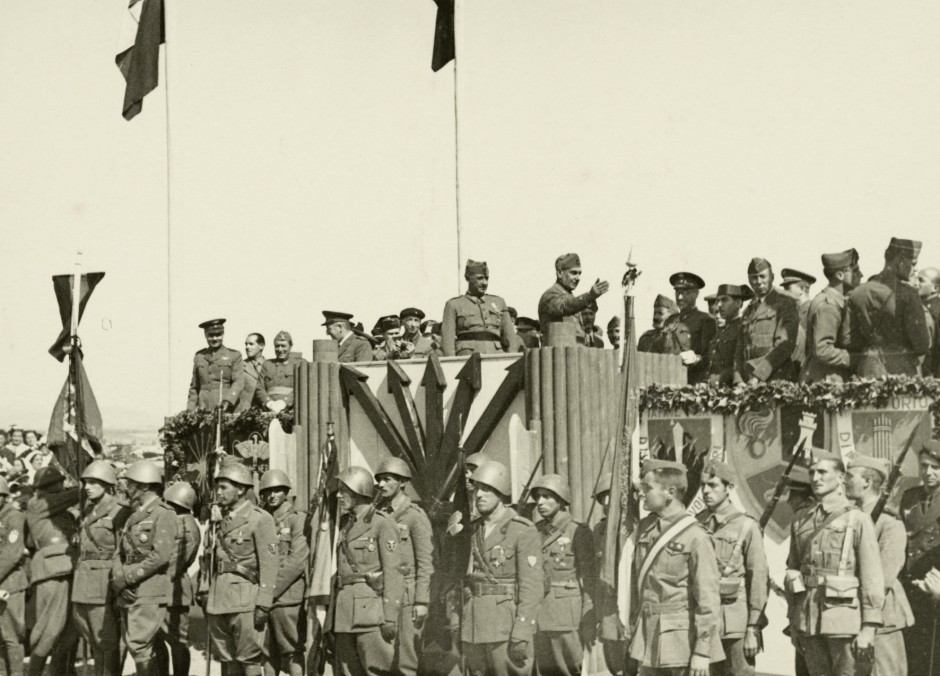 , by Paul Preston
, by Paul Preston
Harper Press, pp. 700
The traumas, wars and dictatorships of the past tend to cause conflicts between different memories, both individual and collective, different ways of perceiving history. Although many Spaniards think that having divided, opposing memories only applies to them, this rift has occurred, and is still present, in every country that suffered criminal political regimes, such as Nazi Germany, Stalinist Russia, the military dictatorships of the Southern Cone and Franco’s Spain. In all these cases, the past refuses to be forgotten. And historical memory, far from being neutral territory, has become a cultural, symbol-appropriating, political battlefield. Such is the situation today in Spain, seventy-five years after the beginning of the civil war and over thirty years since the death of Franco.
In July 1936 a large section of the Spanish army took arms against the Republican regime. What was planned was an uprising, with all the violence necessary, and a quick victory. However, things did not turn out that way, and the result of this uprising was a long civil war lasting nearly three years.
The Spanish Civil War has gone down in history, and in memory, for the dehumanisation of the adversary, for the terrible violence it generated. Lawless, arbitrary shootings and massacres eliminated enemies, real or presumed, on both sides. The Francoists’ policy of extermination of the left was fervently approved of by large numbers of conservative people. Meanwhile where the army coup failed, many of the left saw this as the hour of revolution and of final judgment against the rich, and class hatred and vengeance spread like wildfire. The total of mortal victims, in a country with barely twenty-five million inhabitants, was close to 600,000, of whom 100,000 were due to the repression unleashed by the military rebels and 55,000 to the violence in the Republican zone. The civil war left long-lasting scars on Spanish society.
In this book, Professor Paul Preston provides a comprehensive detailed catalogue of the victims and their tormentors, examining their lives and deaths. Just like a detective who delves into the seemingly most insignificant detail, Preston reconstructs all the pieces of the puzzle of a history of hatred and violence, of the culture of confrontation. Here are seven hundred pages of political and social history, rigorously researched and elegantly recounted, the hallmark of the most methodical English Hispanist to have investigated twentieth-century Spain, as previously borne out in reference works such as Franco. A Biography (1993) or The Spanish Civil War (2006).
Paul Preston starts out from the premise – and this is a constant aspect of his long-standing historical output – that there were several different struggles in the Spanish civil war, the result of a political and ideological class conflict, but also of the defence of other fundamental loyalties such as religion, language, family, religion and nationalism. It was a class war, as may be seen in the speeches, practices and episodes of violence in both zones, but also a war of religion, between Catholicism and anticlericalism, a war revolving around the Fatherland and the nation, as well as a war of ideas. In short, the war saw extensive battles settled within an international framework thrown off balance by the crisis of the democracies and the emergence of communism and fascism.
The Spanish civil war began because the military uprising of July 1936 failed to achieve its basic objective at the outset, which was to seize power and overthrow the Republican regime. This caused a split within the army and the security forces, and by undermining the ability of the State and the Republican government to maintain order, the military coup ushered in unprecedented naked violence from the groups who respectively supported and opposed it.
In the years leading up to this, the owners of the huge estates (latifundios) in the southern half of Spain had professed a deep hatred towards the landless labourers, whom they considered to be ‘sub-human’. The Africanista officers, so called because they had served in the colonial war in Africa, placed the blame for the prolonged decadence suffered by Spain after the Peninsular Wars of 1808 on liberalism and parliamentary democracy, and they associated ‘the subject tribes of Morocco with the Spanish left’ (p. 21). Preston devotes the first two chapters to the examination of the roots of this hatred and violence, the theories and arguments of fascists, officers and Catholics, who ‘alleged the existence of a Jewish-Masonic-Bolshevik plot (and) justified the extermination of the left’ (p. 51).
Spain hardly had a ‘Jewish problem’, but Spanish ‘anti-Semitism without Jews’ was ‘an abstract construction of a perceived international threat’ (p. 42). In the first two years of the Republic, 1931-33, the republican-socialist coalition governments implemented reforms that affected the State, the Catholic Church and the Army, and they took radical, far-reaching measures regarding the distribution of agrarian ownership, the salaries of the working classes, employment protection and public education. However the reforms were regarded by these ‘extermination theorists’ as clear proof that the left ‘was the ungodly anti-Spain’ (p. 51). All were included under this umbrella: the liberal and professional middle classes, socialists, anarchists, communists and regional nationalists.
Right from the start of the military coup, and quite some time before it evolved into open war, the rebels put into action a terror mechanism that destroyed the resistance capabilities of the workers’ and Republican organisations, intimidated their less active adversaries, and physically wiped out their enemies. Thus began mass jailings, systematic torture and ‘hot-blooded’ terror, the paseos (‘walks’), the type of terror that abandoned people wherever they had been shot, in roadside ditches, against cemetery walls, in rivers or in disused wells and mines. Mayors, civil governors, local councillors, trade union and Frente Popular leaders were the first to suffer this terror.
Compliance with the law was replaced by the language and dialectic of arms, by the rejection of human rights and the veneration of violence. Now that this new scenario of total war was under way, in which politics came to be assessed exclusively in military terms and one was either friend or foe, the legitimation of the use of physical violence met no serious obstacles. Political and ideological adversaries, or simply adversaries, no longer had the right to be considered fellow-countrymen. It was a war against what the monarchist intellectual José María Pemán, in a broadcast on Radio Jerez on 24 July 1936, called ‘hordes of barbarian invaders’, in an implicit comparison of the working class left with the Berber invaders of 711 (p. 136).
Under these circumstances, with no law to be obeyed, and with no fear of punishment, gangs of killers appeared everywhere, protected by the army, by landowners and the middle class fearful of revolution; they organised shooting parties to settle old scores, dominated by young Falangists, students, and people of order, but also by predatory and spiteful individuals who, unfettered by the inhibitions that had previously restrained their violent instincts, now gave free rein to their aggression and cruelty. In Andalusia, the landowners aimed ‘to put the clock back’ and when labourers were shot, they were made to dig their own graves, while Falangist señoritos shouted at them, ‘Didn’t you ask for land? Now you’re going to have some, and forever’ (p. 148).
The killings were rife wherever there was the most resistance, wherever old conflicts and influential leftist organisations triggered the settling of scores. The columns that advanced from Seville through Extremadura with the aim of taking Madrid used the techniques of terror to paralyse the enemy. In Badajoz, at least 3,800 people ‘were shot without trial, their bodies disposed of in common graves or else incinerated’, leaving no record of them (p. 321). But the wave of extermination also swept up thousands of people in areas such as Galicia, Aragón, Castilla or the north of Spain, where social struggles and class hatred were less intense.
Catholicism, closely associated in Spain’s contemporary history with political and social conservatism, became the perfect link for all those who supported the military rebels. The principal hierarchies of the Catholic Church, except for a few who did not share this warlike zeal, offered their aid and blessing to the rebels. And thus this civil war caused by a coup d’état turned into a religious crusade to save Christian civilisation.
In the Republican zone, where the military uprising had failed to materialise or had been put down, the overthrow of the existing order facilitated the birth of the long-awaited revolution, with those considered to be oppresors liquidated in their hundreds and thousands during the summer of 1936. Right-wingers, the military, professionals and trades people, Catholic workers and many farm owners made up the sectors that were most affected by the radical elimination of the adversary. The clergy and Church property were the prime targets of popular rage. Over 6,800 ecclesiastics were killed; a large number of churches, hermitages and sanctuaries were burnt or suffered looting and desecration, with their works of art and items of worship totally or partially destroyed.
During the early weeks of the war, ‘Fascists hunts’, the defence of the revolution and persecution of the adversary were inextricably united. This unrestrained terror began with the elimination of those who had taken part in the rising against the Republic, continued as an urgent task to suppress ‘reaction’ and ended up contaminating the very foundations of Republican law and order. The time had finally come for the people to throw off its chains, and there were many who enthusiastically subscribed to this extremist rhetoric, from Catalonia to the Levante, the Aragón of the anarchist militias or the socialist day labourers of La Mancha.
Preston devotes a long chapter to the massacres of November 1936 in a Madrid besieged by the Nationalists, and examines ‘within the limits of the available evidence, what happened, who made the decision for it to happen and who carried it out’ (p. 349). Between 2,200 and 2,500 prisoners, eminent rightwingers, officers and clergy were removed from various gaols in the capital, taken to two locations on the outskirts, Paracuellos and Torrejón, and were shot in what constituted ‘the greatest single atrocity in Republican territory during the war, its horror explained but not justified by the terrifying conditions in the besieged capital’ (p. 368).
The sacas (‘removals’) were organised by the Council for Public Order, but also taking part were a broad group of communists, anarchists and Republican authorities, with Santiago Carrillo, later leader of the Communist Party in exile and during the transition to democracy, ‘fully involved’. For unlike the violence in previous months, ‘triggered by popular outrage at bombing raids or news brought by refugees of rebel atrocities, these extra-judicial murders were carried out as a result of political-military decisions’ (p. 368).
In short, the terror, symbolised by the sacas, paseos and mass killings, served the two sides in their struggle to eliminate their respective enemies, whether natural or unforeseen. It was an essential part of the ‘glorious National Movement’, its onslaught against the Republic and the gradual conquest of power, skirmish by skirmish, massacre by massacre, battle by battle. It also became a basic ingredient of the diversified chaotic response provided by left-wing political and trade union organisations to the military coup. Contrary to appearances, this violence was not so much a consequence of the war as the direct result of a military uprising which from the outset went hand in hand with unpunished murder and the coup de grâce. It was a strategically designed plan which, in the places where it failed, was met by a sudden and fierce armed response against the main players in the uprising and those considered to be their material and spiritual brothers in arms.
After the oficial end of the war, on 1 April 1939, destruction of the vanquished became the Francoist army’s absolute priority. Death was unleashed with total impunity. Thus began a new period of mass execution, prison and torture for thousands of men and women. At least 20,000 people, says Preston, were executed in the decade following the war, without counting the thousands of deaths caused by starvation and disease in the various prisons and concentration camps. ‘The fiction that defence of the Republic was a crime of military rebellion was the basis of all the summary courts martial’ (p. 473).
The elimination of the vanquished opened up broad political and social opportunities for the victors and provided them with vast benefits. It was, in short, a purge with wide-ranging consequences, which dismantled the culture and social foundations of the Republic, the labour movement and secularism. The destruction of the vanquished and the benefits resulting from victory in the war formed the basis of power of Francoism, on which General Franco and the victors built their own particular regime for nearly 40 years.
Franco’s dictatorship made sure that its victory was always evident. It peppered the entire Spanish territory and society with memorials and dealt out ruthless punishment to the vanquished, their children, and their children’s children. The churches were filled with plaques conmemorating those who had ‘fallen in the service of God and the Fatherland’. Furthermore, thousands were murdered by the military and fascist terror and their names were never even commemorated on a humble tombstone. The vanquished were frightened even to claim the bodies of their loved ones.
From the first moment of the transition to democracy after the death of Franco, blowing the dust off this history of war and dictatorship was a task undertaken almost exclusively by a broad group of professional historians, Hispanists and a new generation of Spaniards who uncovered new sources, discussed the different ways of interpreting them and started comparing the context with what had occurred in other societies. Paul Preston’s painstaking, detailed research over the course of nearly forty years encapsulates this resurgence in historiography to perfection: he is constantly searching for new horizons for his accounts, from biography to synthesis, at the same time sharing them with a comprehensive group of followers. Without doubt, his entire output represents one of the most complete and widely-disseminated portraits, in Spanish, English and other languages, of this traumatic past.
But despite the efforts of a good number of historians to analyse those events in order to understand them and transmit them to future generations, the society that emerged from Francoism and grew in the first two decades of democracy displayed marked signs of indifference towards the cause of the victims of the civil war and the dictatorship. Following the passing of the Amnesty Act on 15 October 1977, the State renounced any future intention of opening judicial inquiries into, or holding anyone responsible for, ‘crimes committed by public servants against human rights’. Under the traumatic memory of the war, interpreted as a type of collective madness, with abominable crimes in both camps, and the fear imposed by the dictatorship, there was no talk then of setting up truth commissions to investigate the thousands of killings and the systematic violation of human rights practised right to the end by Franco and his armed forces.
The struggle to reveal the hidden past, awareness of the truth and the call for justice were never distinguishing marks of the transition to democracy. Spain was full of memorials to the winners of the civil war, with the Valley of the Fallen at the forefront, a homage to the sacrifice of the ‘heroes and martyrs of the Crusade’, while the other dead, the tens of thousands of reds and unbelievers murdered during the war and post-war years, simply did not exist. Neither governments nor political parties seemed to be interested in examining the need to redress this injustice, nor was there any strong social pressure to reject this official disregard for the crimes of the Francoist dictatorship.
This began to change, gradually, during the second half of the nineties, when previously unknown facts and figures regarding the victims of the civil war and Francoist violence came to light; it coincided with the growing importance that international opinion was giving to debates on human rights and the need for remembrance of wars and dictatorships following the end of the Cold War and the disappearance of the communist regimes of eastern Europe.
Thus emerged a new social construction of memory, with hundreds and hundreds of local histories, documentaries, testimonies and memories coming to light. Furthermore, a section of society began to mobilise itself, associations for the recovery of historical memory were set up, mass graves were opened up in the search for the dead who were never registered, and the descendents of those killed by the Francoists, more often their grandchildren than their children, began to ask themselves what had happened, why this story of death and humiliation had been covered up and who had been the executioners.
The list of atrocities committed by the rebel army and by Francoism, and the emergence of this new social dimension of remembrance, almost always misnamed historical memory, also brought about a reaction from well-known journalists, right-wing propagandists and amateur historians, and they resumed the old ideas that had sustained the propaganda machine of Franco’s dictatorship: that it was the left with its violence and hatred that caused the civil war and that Franco and his dictatorship were beneficial for Spain, because they liberated it from something much worse, red tyranny.
Thus all the complex, painstaking explanations of historians now boiled down to two questions: who started the war, and who carried out the most cold-blooded killings. Propaganda replaced historical analysis and the versions of the winners of the war returned to the fore, the Francoist truths which are, as the leading experts on this period have shown, great historical falsehoods.
The arrival in 2004 of a socialist government under José Luís Rodríguez Zapatero opened a new cycle. For the first time in the democratic era, politics was to take the initiative in the legal and political reparation for the violence meted out to the victims of Francoism. This was the prime significance of the Bill presented at the end of July 2006, later to be known as the Ley de Memoria Histórica (The Historical Memory Act). This led to memory being discussed more openly than ever before, and the past was to become a lesson for the present and the future.
The Bill did not deal with different interpretations of the past: it was not trying to define responsibility or point the finger of guilt. Nor did it propose a Truth Commission which in other countries had been set up to register the mechanisms of death, violence and torture and identify the victims and their executioners. Even so, it provoked strong reaction from the opposition right, the Catholic Church and its media outlets.
The Act, which was finally passed on 31 October 2007, opened new avenues for moral redress and legal and political recognition for the victims of the civil war and Francoism. In October 2008, judge Baltasar Garzón, under the terms of this Act, applied to investigate the circumstances of the death and whereabouts of thousands of civil war and dictatorship victims, many of them left by their killers in roadside ditches, against cemetery walls, buried in common graves – all murdered without any trial or legal safeguards. Since the political class had never taken legal and political recognition of these victims seriously, it fell to a judge to take the initiative, the same judge, incidentally, who had taken action against the GAL (Grupos Antiterroristas de Liberación – an anti-ETA death squad), sent hundreds of ETA terrorists to prison and ordered the arrest of Augusto Pinochet.
Instead of allowing this shameful history of political assassination to be investigated, instead of trying to understand and explain why it occurred, condemn and learn from it, a certain sector of judges, politicians and the media began a harsh persecution of Baltasar Garzón, and this culminated in May 2010 with his suspension and disqualification for daring to investigate the crimes of Francoism.
The fact that memory, or rather conflicting memories, have become the major factor in the debate, together with political and media fury in Spain shows firstly, the weight of the legacy of Francoism, of a past that will not go away or be forgotten; and secondly, the confrontation between history and memory. Thus the accounts and analyses of historians is one thing, but a completely different thing is the perceptions that millions of Spaniards might have acquired through official Francoist propaganda received in their homes or from the various representations disseminated in the media, literature, documentaries or the cinema.
All this pervades The Spanish Holocaust, a title that Paul Preston chose to capture ‘the collective violence in both rearguards unleashed by brutal perpetrators against undeserving victims’, as well as ‘its resonances of systematic murder’ (XII). On the one hand, Preston, showing all his historical mastery, brings together all the arguments, hypotheses, questions and confirmed events offered by historians in recent years regarding all these examples of violence.
Nothing is omitted from his analysis, from the victims of the paseos and sacas to the executions carried out after sentences handed down by popular tribunals, as well as detailed descriptions of the drama of the gaols and concentration camps, with the names of hundreds of players in this terrible story, both tormentors and victims. Thanks to this fruitful dialogue between theory and empirical research, the history, myths and memories of the red and fascist terror, class- and gender-based violence, extermination of the adversary in the name of God and the Fatherland, and the cruel, obsessive persecution suffered by the clergy are all revealed to us.
But in citing dozens and dozens of local histories, simple accounts of the brutality and violent actions perpetrated by the rebels or Falangists in their towns and villages for the construction of this analysis, the book also concerns itself with the testimony of those subjected at times to an uncontrollably excessive invasion of information and opinion which places their experiences at the centre of the picture. What comes through in all these memories meets a hitherto unresolved need for justice and retribution after so many years of silence and oblivion. A very selective memory, to which Preston perhaps attaches too much importance to.
However, Preston does not go into the sensitive area of the relationship between history and the political debate of the present day. He limits himself to trying to unearth the truth although he knows, as all good historians do, that it is sometimes partial and ambivalent. More than the testimony and the drama of those who suffered the violence, what Preston provides is a comprehensively diverse reconstruction, in which he combines the analytical and technical procedures of painstaking research with imagination and creative narrative. This is the most appropriate line to follow for reconstructing the parts of the past that have yet to be recovered. And this endorses The Spanish Holocaust as being the best-documented evidence of that time of hatred, its origins, its development and its consequences.
Esta amplia reseña fue publicada en International Journal of Iberian Studies, Volume 25, Number 3, 2012 (pp. 215-225)

 HISTORIADOR - Catedrático de Historia Contemporánea en la Universidad de Zaragoza
HISTORIADOR - Catedrático de Historia Contemporánea en la Universidad de Zaragoza


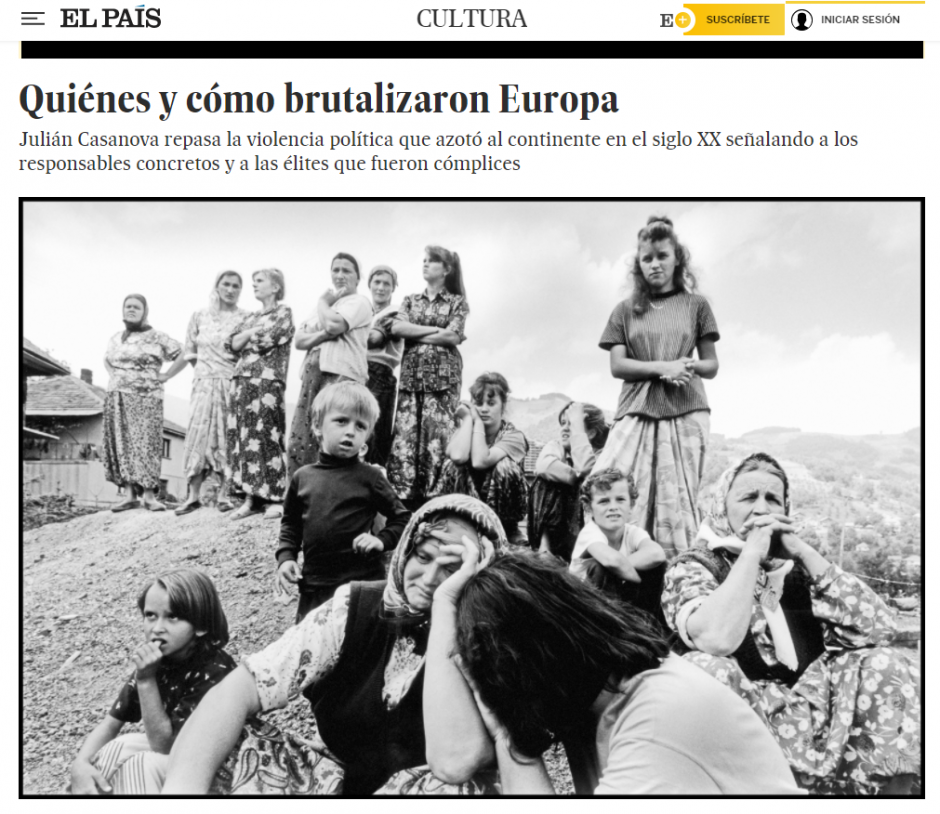
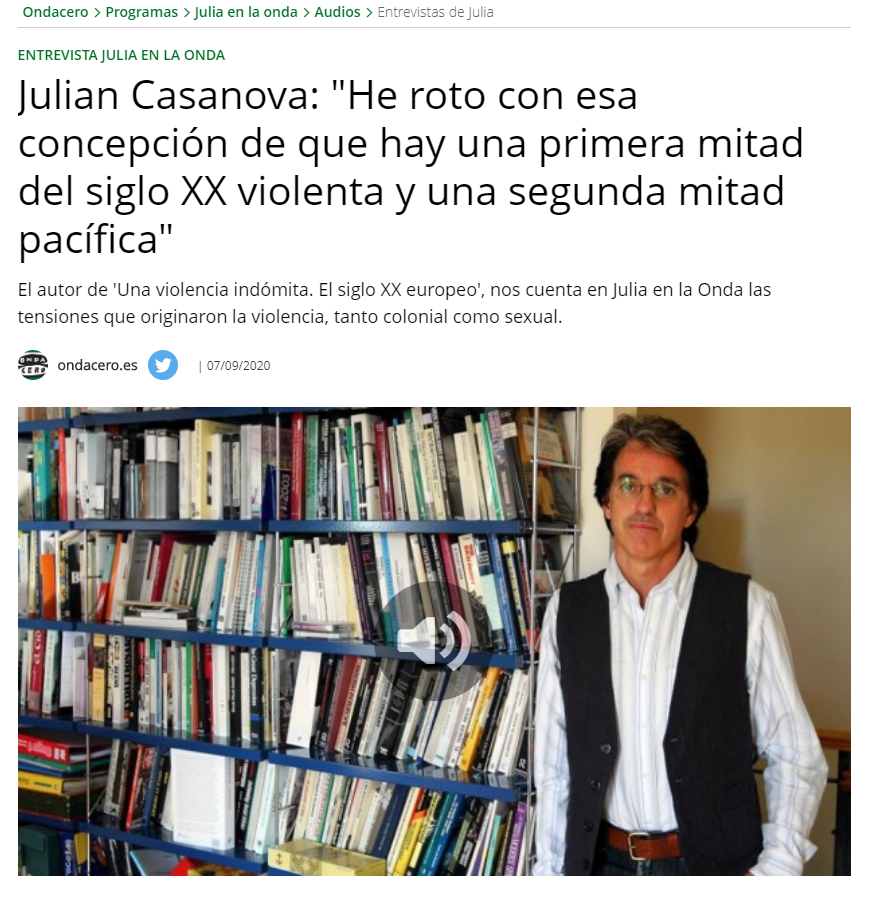
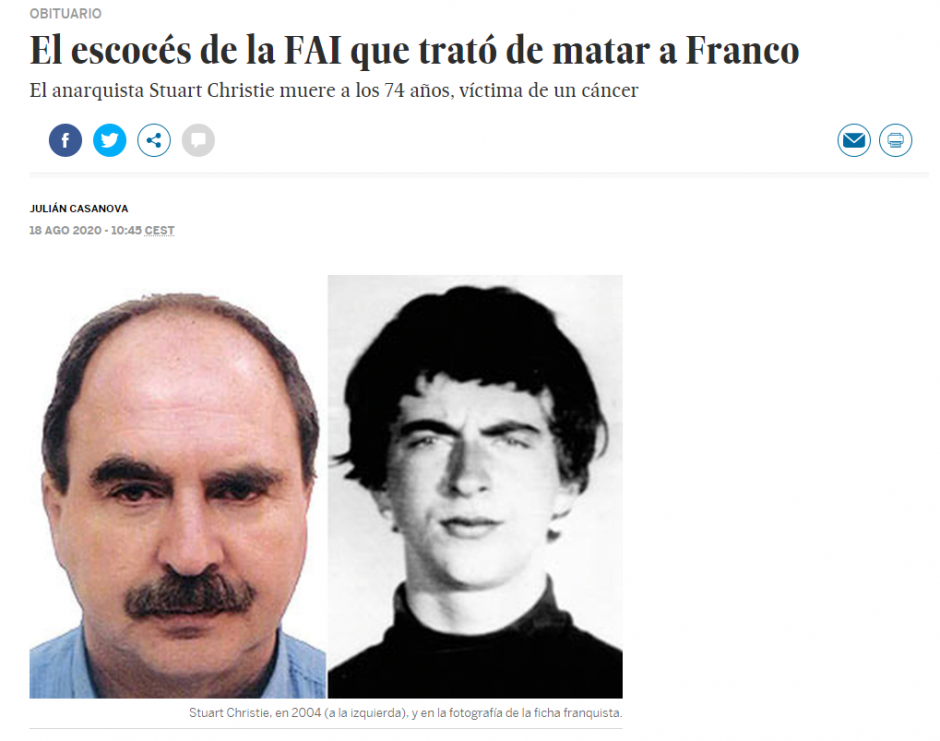
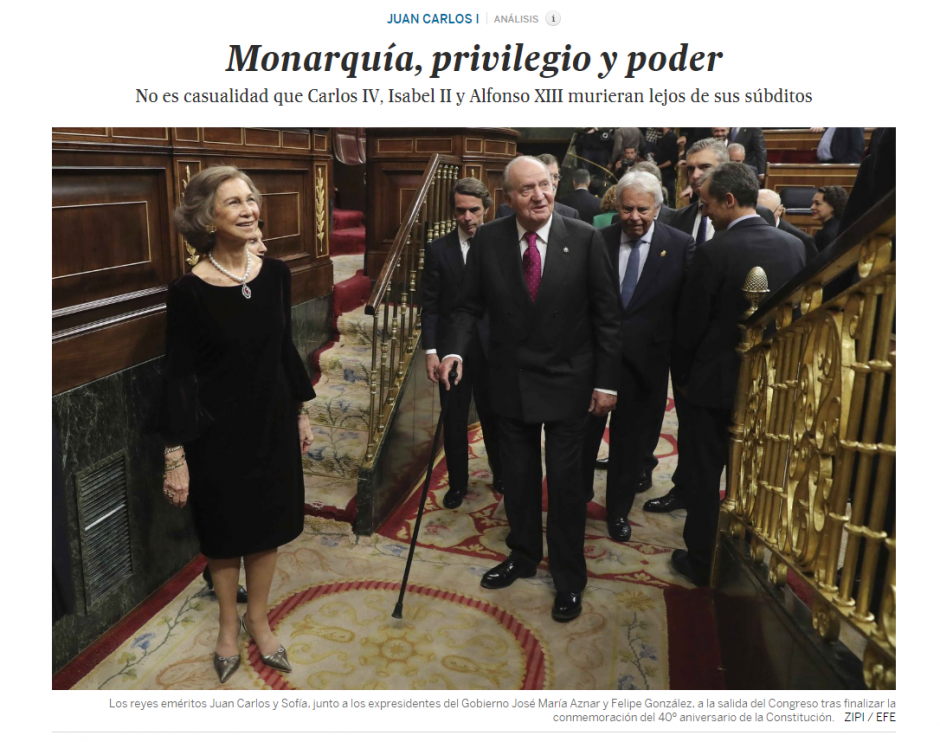
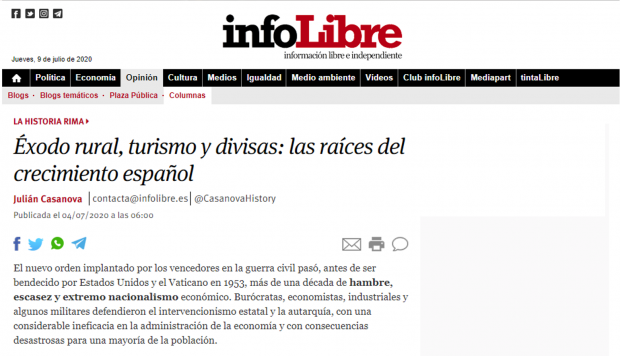
The most glorious moment in your life are not the socalled days of success, but rather those days when out of dejection and despair you feel rise in you a challenge to life, and the promise of future accomplishment. (Gustave Flaubert, French writer)
3x slimming power amazon
[url=http://www.justbabyblog.com/components/com_mail/]3x slimming power amazon[/url]
An interesting discussion is worth comment. I think that you should write more on this topic, it might not be a taboo subject but generally people are not enough to speak on such topics. To the next. Cheers